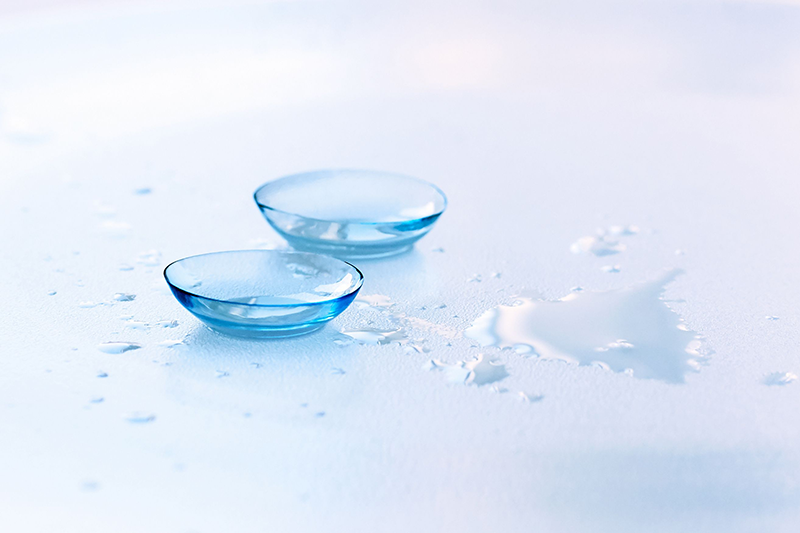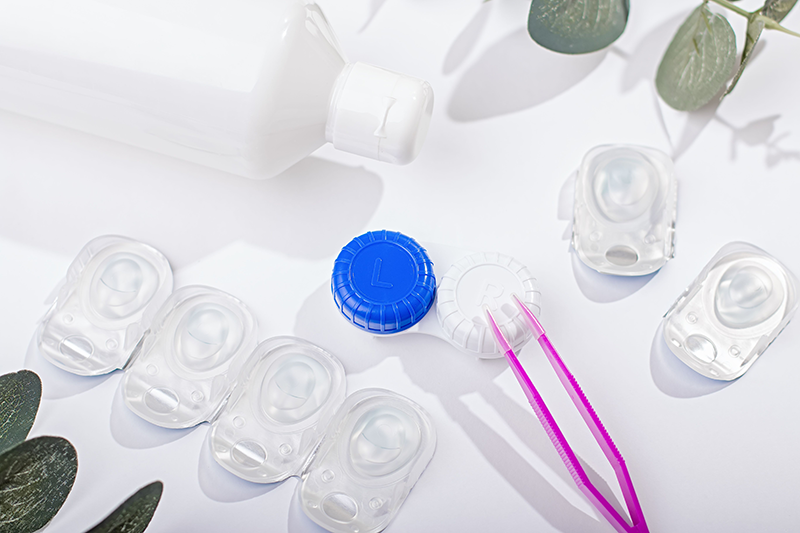Crying with Contact Lenses? Separating Truth from Fiction

Table of Contents
- Common Myths About Contact Lenses (Debunked)
- Myth #1: Crying While Wearing Contacts Is Dangerous
- Myth #2: Over-Wearing Contacts Won’t Harm Your Eyes
- Myth #3: Sleeping in Contacts Is Fine
- Myth #4: You Can Use Water or Saliva Instead of Lens Solution
- Myth #5: Older People Can’t Wear Contact Lenses
- Myth #6: Bifocal Wearers Can’t Use Contacts
- Myth #7: Long Nails Make Wearing Contacts Impossible
- Myth #8: Contacts Are Always Uncomfortable
- Myth #9: Swimming With Contacts Is Safe
- Myth #10: Sharing Contacts Is Okay
- Living Your Best Life With Contacts
Common Myths About Contact Lenses (Debunked)
If you’ve ever considered wearing contact lenses, you’ve likely heard rumours about their safety or comfort. From crying while wearing contacts to whether older adults can use them, misinformation abounds. Let’s bust these myths and help you take care of your lenses properly.
Myth #1: Crying While Wearing Contacts Is Dangerous
If you’ve shed a tear while wearing contacts, you might have noticed your vision becoming a bit blurry. That’s due to the excess tears mixing with the natural moisture your lenses are designed to handle.
Here’s the good news: crying while wearing contacts isn’t dangerous. However, your contacts might shift or stick to your eyelids due to the extra moisture. This can feel uncomfortable, but it’s not harmful.
What to Do:
- Avoid rubbing your eyes, as this can damage the lenses or cause them to fall out.
- After a good cry, remove and clean your lenses before putting them back in.
Myth #2: Over-Wearing Contacts Won’t Harm Your Eyes

Contacts come with specific wear limits for a reason – your eye health! Daily, fortnightly, and monthly lenses are made from materials that degrade over time. These limits aren’t a marketing ploy; they’re crucial for avoiding eye irritation, infections, and other complications.
Key Tips:
- Follow the wear duration (e.g., daily, fortnightly, or monthly).
- Always check the expiry date on the packaging to ensure your lenses are safe to use.
Wearing expired or overused lenses can lead to problems like corneal ulcers or irritation. Give your eyes a break by switching to glasses when needed, especially at the end of the day.
Myth #3: Sleeping in Contacts Is Fine

Accidentally sleeping in your contacts happens to the best of us, but it’s a habit to avoid. Your eyes need oxygen to stay healthy, and contacts reduce the amount your corneas receive during sleep.
The Risks Include:
- Keratitis (corneal inflammation)
- Corneal ulcers
- Conjunctivitis (pink eye or giant papillary conjunctivitis)
- Corneal neovascularisation (growth of extra blood vessels in the cornea)
Always remove your lenses before bed to protect your eyes.
Myth #4: You Can Use Water or Saliva Instead of Lens Solution

Never rinse your contacts with water or saliva. Unlike contact lens solution, water and saliva are not sterile and can introduce harmful bacteria into your eyes.
The Dangers Include:
- Severe infections like Acanthamoeba keratitis, which can lead to permanent vision loss.
Always carry a small bottle of lens solution with you for emergencies.
Myth #5: Older People Can’t Wear Contact Lenses
Age isn’t a barrier to wearing contacts. While it’s true that tear production may decrease with age, and dexterity might become a challenge, there are solutions.
Modern contact lenses, including those for presbyopia (age-related farsightedness), are designed to accommodate older adults. Multifocal lenses and customised fittings make it possible for people of all ages to enjoy the convenience of contacts.
Myth #6: Bifocal Wearers Can’t Use Contacts
Bifocal and multifocal contact lenses are widely available and work for people with multiple prescriptions. Your optometrist can help you find the best fit, whether you need soft lenses or rigid gas-permeable (RGP) ones.
Myth #7: Long Nails Make Wearing Contacts Impossible
Having long nails doesn’t mean you can’t wear contacts – it’s all about technique. Use the pads of your fingers (not your nails) to handle the lenses, and you’ll be fine.
Myth #8: Contacts Are Always Uncomfortable
Modern contact lenses are designed with comfort in mind. While there’s an adjustment period, most people adapt within a couple of weeks. Your optometrist can help you try different brands and materials until you find the perfect fit.
Myth #9: Swimming With Contacts Is Safe

Water and contact lenses don’t mix. Whether you’re swimming in a pool, lake, or ocean, bacteria in the water can cling to your lenses and lead to serious eye infections.
If You Must Swim:
- Wear waterproof goggles over your contacts.
- Remove and clean your lenses after swimming.
Myth #10: Sharing Contacts Is Okay
Contact lenses are prescription medical devices tailored to each person’s eyes. Sharing lenses can expose both parties to bacterial infections and corneal damage. Keep your contacts to yourself – no exceptions!
Living Your Best Life With Contacts
Contact lenses are a safe and convenient option for vision correction when used correctly. From crying myths to swimming safety, debunking these common misconceptions can help you enjoy clear, effortless vision.
Are you ready to explore your options, consult your optometrist and find the perfect pair of lenses for your needs!
For more tips on eye care or to explore a wide selection of lenses, visit our website today!
